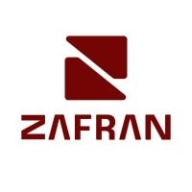


Skybox Security Suite and Microsoft Defender Vulnerability Management compete in network security solutions. Skybox seems to have the upper hand due to its scalability and integration capabilities, while Microsoft Defender shines in seamless integration within Microsoft ecosystems and effective vulnerability management.
Features: Skybox Security Suite is valued for network path analysis, firewall assurance, and vulnerability control. It provides a comprehensive dashboard, supports integration with over 130 vendors, and includes offline attack simulation. Microsoft Defender is noted for continuous vulnerability assessment, integration with Microsoft Sentinel, and Microsoft Security Scorecard, allowing detailed risk assessment and recommendations.
Room for Improvement: Skybox needs enhancements in its web interface development, integration with more security tools, and reporting features. Microsoft Defender can improve its portal refresh rates, report customization capabilities, and simplify its pricing and licensing structures.
Ease of Deployment and Customer Service: Skybox generally involves on-premises configurations, sometimes leading to complex deployments. Customer support experiences vary, with some users noting delayed response times. Microsoft Defender benefits from cloud flexibility, easing deployment in hybrid environments. Customer service is usually responsive, though there is room for better technical guidance.
Pricing and ROI: Skybox's pricing is high, especially for large networks requiring multiple licenses, suiting big organizations. Microsoft Defender provides a more economical option within Microsoft license tiers but might become costly for advanced features. Both solutions offer favorable ROI in large-scale implementations, focusing on cost-effectiveness for varied security needs.
| Product | Market Share (%) |
|---|---|
| Microsoft Defender Vulnerability Management | 2.7% |
| Zafran Security | 1.0% |
| Skybox Security Suite | 0.6% |
| Other | 95.7% |



| Company Size | Count |
|---|---|
| Small Business | 8 |
| Midsize Enterprise | 2 |
| Large Enterprise | 5 |
| Company Size | Count |
|---|---|
| Small Business | 21 |
| Midsize Enterprise | 4 |
| Large Enterprise | 20 |
Zafran Security integrates with existing security tools to identify and mitigate vulnerabilities effectively, proving that most critical vulnerabilities are not exploitable, optimizing threat management.
Zafran Security introduces an innovative operating model for managing security threats and vulnerabilities. By leveraging the threat exposure management platform, it pinpoints and prioritizes exploitable vulnerabilities, reducing risk through immediate remediation. This platform enhances your hybrid cloud security by normalizing vulnerability signals and integrating specific IT context data, such as CVE runtime presence and internet asset reachability, into its analysis. No longer reliant on patch windows, Zafran Security allows you to manage risks actively.
What are the key features of Zafran Security?
What benefits can users expect from Zafran Security?
In industries where security is paramount, such as finance and healthcare, Zafran Security provides invaluable protection by ensuring that only exploitable vulnerabilities are addressed. It allows entities to maintain robust security measures while allocating resources efficiently, fitting seamlessly into existing security strategies.
Microsoft Defender Vulnerability Management enables organizations to identify vulnerabilities, manage patches, and fortify threat detection. It offers endpoint assessments, cloud incident management, and dynamic security through Microsoft's Security Scorecard integration.
Organizations leverage Microsoft Defender Vulnerability Management for advanced threat detection and response. It provides robust tools for vulnerability assessment and cloud incident management, integrated with Microsoft's Security Scorecard to enhance dynamic security profiling. Key features include automatic patch deployment, security configuration management, and seamless integration with Microsoft platforms, benefiting both on-prem and cloud environments. Organizations can track vulnerabilities with severity-based reports, helping manage outdated software and minimizing threat exposure.
What are the key features of Microsoft Defender Vulnerability Management?In healthcare, Microsoft Defender Vulnerability Management helps manage compliance with health regulations, while in finance, it aids in securing sensitive data from cyber threats. Manufacturing sectors benefit from its patch management, keeping operational technology systems less vulnerable to disruptions.
Skybox Security Suite provides comprehensive tools for network and firewall compliance, vulnerability management, and change management, with a focus on risk reduction and network optimization.
Skybox Security Suite supports over 130 vendors with massive scalability and seamless integration, notably with Nessus and Qualys. Its features include network path analysis and offline attack simulation, which enhance management effectiveness. Despite its robust offering, improvements are needed in its UI, web interface, reporting detail, and customization. Automation, orchestration, and device policy provisioning require better support, and integration with tools like Rapid7 could be improved. Enhancements in firewall configuration checks, cloud connectivity, pricing, and marketing awareness are also called for, alongside a transition from Java GUI to a consistent web-based system.
What Are Key Features of Skybox Security Suite?Skybox Security Suite is commonly used in industries requiring strict compliance like finance and healthcare. Firms employ it for firewall audits, enhancing network visibility, and managing configurations against standards such as PCI, ensuring security and policy compliance across expansive networks.
We monitor all Vulnerability Management reviews to prevent fraudulent reviews and keep review quality high. We do not post reviews by company employees or direct competitors. We validate each review for authenticity via cross-reference with LinkedIn, and personal follow-up with the reviewer when necessary.